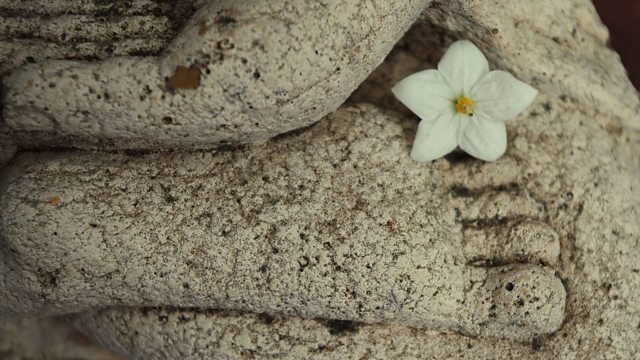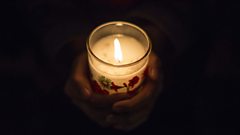Rev Dr Jane Leach - 22/01/2018
Thought for the Day
Good Morning
It was wet again in London on Saturday. Forced indoors I went to see some of the objects from the Radio 4 Living with the Gods series. The British Museum’s exhibition contains some stunning artefacts - from the, now famous, lion man crafted from mammoth ivory – to a 21st century papier maché Judas devil from Mexico’s Day of the Dead.
Given the scope of the exhibition – aiming to describe the role of religious beliefs and practices in the lives of human beings for the last 40,000 years - I found myself wondering about the art of curation. Which objects to choose and which to leave out? What overarching story to tell and to whom might it belong? For as I looked I wondered how many of the communities to whom these objects had once belonged might feel violated by the juxtapositions, or by the reduction of the sacred things in which they’d invested ultimate value, to a curiosity for tourists.
But the last exhibit brought me up short. Here was a set of little boats made by the Syrian artist, Issam Kourbaj, from recycled bicycle mudguards. Jam-packed with upright spent matches, they looked from a distance like overloaded boats. And above them was suspended the Lampedusa Cross – made by Francesco Tuccio from the smashed boatwood of migrant vessels destroyed in the Mediterranean – an example of the crosses he makes and gives to survivors.
Unlike the other exhibits in which, to me, the relationship between the symbols displayed and the lives and meanings of those to whom they’d belonged seemed lost or obscured, here was the visceral power of human life and death crafted into a living symbol - in part by the artists - and in part by the curator who’d put the objects together – this cross a sign of divine-human solidarity in the face of this suffering; a witness to injustice and a token of hope.
In their recent book, Leading by Story, Vaughan Roberts and David Sims use the metaphor of curation to describe the task of leadership. They ask of religious (as well as other) leaders whether they are seeking falsely to create one single narrative and drive it through as if the future only belonged to them, or whether they have the courage to face the complexity and power of the intersecting stories and meanings in their communities. It made me think again about the Lampedusa exhibit. Meaningful to me, what might be the impact on those who’ve suffered at Christian hands of their story, here being presided over by a Christian cross?
Even Jesus had to face the curation question. Convinced that his mission was to Israel, when faced with a Syrian woman asking for healing, he was challenged to enlarge his vision. Wise leaders of all kinds need to ask to what extent it’s our role to drive forward our own narrative, and to what extent to create the conditions in which we can hear and respond to others as well, so that a more widely owned future can emerge?
Duration:
This clip is from
More clips from Thought for the Day
-
![]()
Professor Michael Hurley - 13/11/2025
Duration: 03:05
-
![]()
Rev Roy Jenkins - 12/11/2025
Duration: 03:07
-
![]()
Professor Mona Siddiqui - 11/11/2025
Duration: 02:59
-
![]()
Rev Lucy Winkett - 10/11/2025
Duration: 03:11






